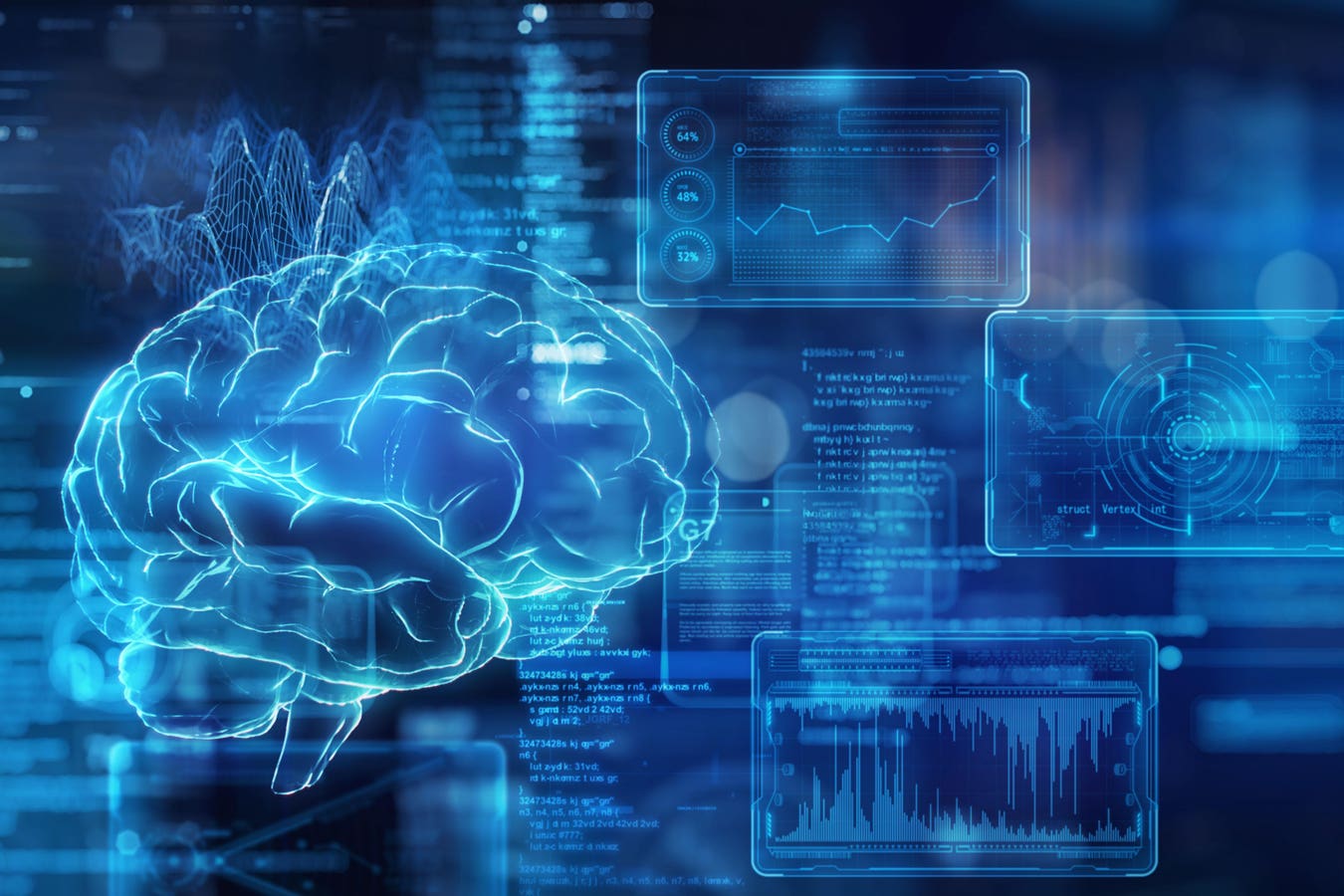Understanding AI's Learning Process: Towards More Responsible Implementation

Table of Contents
The Mechanics of AI Learning: Different Approaches
AI learns through various methods, each with its strengths and weaknesses. Understanding these approaches is crucial for building robust and ethical AI systems.
Supervised Learning
Supervised learning involves training an AI model on a labeled dataset—data where the input and desired output are known. The model learns to map inputs to outputs, improving its accuracy over time.
- Examples: Image recognition (identifying objects in images), spam filtering (classifying emails as spam or not spam).
- Advantages: High accuracy when trained on sufficient, high-quality data. Relatively straightforward to implement.
- Disadvantages: Requires large labeled datasets, which can be expensive and time-consuming to create. Highly dependent on the quality of the training data; biased data leads to biased results.
- Bullet points:
- Relies on labeled datasets.
- Accuracy heavily depends on data quality.
- Prone to bias if training data is not representative.
Unsupervised Learning
Unsupervised learning deals with unlabeled data. The AI model identifies patterns, structures, and relationships within the data without explicit guidance.
- Examples: Customer segmentation (grouping customers based on their purchasing behavior), anomaly detection (identifying unusual patterns in data).
- Advantages: Can uncover hidden patterns and insights in data. Less reliant on labeled data.
- Disadvantages: Interpreting the results can be challenging. The model's findings might not always be easily explainable.
- Bullet points:
- Discovers hidden patterns and relationships.
- Less dependent on labeled data.
- Interpretation of results can be complex.
Reinforcement Learning
Reinforcement learning involves an AI agent learning through trial and error. The agent interacts with an environment, receives rewards or penalties for its actions, and learns to maximize its cumulative reward.
- Examples: Game playing (AlphaGo mastering Go), robotics (training robots to perform complex tasks).
- Advantages: Highly adaptable to dynamic environments. Can learn complex behaviors without explicit programming.
- Disadvantages: Can be computationally expensive. Potential for unpredictable behavior if not carefully designed and monitored.
- Bullet points:
- Learning through trial and error.
- Adaptable to dynamic environments.
- Potential for unpredictable behavior.
Data: The Fuel for AI Learning
Data is the lifeblood of AI. Its quality and ethical handling are paramount to responsible AI development.
The Importance of Data Quality
The quality of the training data significantly impacts the performance and fairness of an AI system. Biased or incomplete data leads to biased and inaccurate results.
- Impact of biased or incomplete data: Perpetuates existing societal biases, leading to unfair or discriminatory outcomes.
- Data cleaning and preprocessing techniques: Handling missing values, outlier detection, data normalization, and feature engineering.
- Bullet points:
- Data bias detection is crucial.
- Data augmentation techniques can improve data quality.
- Diverse and representative datasets are essential.
Data Privacy and Security
Collecting and using data for AI training raises serious ethical and legal concerns. Protecting user privacy and data security is non-negotiable.
- Ethical considerations: Transparency about data usage, informed consent, and data minimization.
- Regulations and compliance: Adherence to regulations like GDPR (General Data Protection Regulation) and CCPA (California Consumer Privacy Act).
- Bullet points:
- Anonymization and pseudonymization techniques protect user identity.
- Data encryption secures data during transmission and storage.
- Responsible data handling practices are critical.
Addressing Bias in AI's Learning Process
Bias in AI systems can have devastating consequences. Addressing bias requires a multi-faceted approach.
Identifying and Mitigating Bias
Bias can stem from both the algorithm and the data used to train it. Identifying and mitigating bias requires careful analysis and proactive measures.
- Types of bias: Algorithmic bias (inherent bias in the algorithm's design), data bias (bias reflected in the training data).
- Bias detection and mitigation techniques: Statistical analysis, fairness-aware algorithms, adversarial training.
- Bullet points:
- Fairness-aware algorithms help mitigate bias in decision-making.
- Adversarial training can make models more robust to biased inputs.
- Data augmentation for underrepresented groups can improve fairness.
The Role of Human Oversight
Human oversight is essential throughout the AI development lifecycle to ensure ethical considerations are addressed and biases are mitigated.
- Importance of human intervention: Monitoring AI performance, identifying and correcting biases, and ensuring accountability.
- Explainable AI (XAI): Making AI decision-making processes more transparent and understandable.
- Bullet points:
- Human-in-the-loop systems allow for human intervention in critical decisions.
- Model interpretability helps understand how AI arrives at its conclusions.
- Continuous monitoring and evaluation are crucial for identifying and correcting issues.
Towards Responsible AI Implementation
Responsible AI implementation requires adherence to ethical frameworks, promoting transparency, and fostering collaboration.
Ethical Frameworks and Guidelines
Several ethical guidelines and principles exist for AI development, such as the Asilomar AI Principles. Adhering to these guidelines is crucial for responsible AI.
- Ethical guidelines: Providing frameworks for responsible AI development and deployment.
- Transparency and accountability: Making AI systems transparent and ensuring accountability for their actions.
- Bullet points:
- Ethical considerations should be integrated throughout the AI lifecycle.
- Regular auditing of AI systems is necessary to ensure compliance.
- Promoting responsible innovation requires a collaborative effort.
The Future of AI Learning and Responsible Development
The future of AI relies on continuous improvement in both its learning capabilities and its ethical development.
- Future trends: Federated learning (training AI models on decentralized data), transfer learning (applying knowledge learned in one domain to another).
- Ongoing need for research and development: Addressing challenges related to bias, fairness, privacy, and explainability.
- Bullet points:
- Collaborative efforts are essential for advancing responsible AI.
- Continuous improvement and refinement of AI systems are necessary.
- Education and training are vital for promoting responsible AI development.
Understanding AI's Learning Process: A Call for Responsible Action
This article has explored the complexities of AI's learning process, emphasizing the crucial need for responsible implementation. We've highlighted the importance of understanding different learning approaches, addressing bias, ensuring data privacy, and adhering to ethical frameworks. The future of AI depends on our collective commitment to developing and deploying AI systems that are beneficial, fair, and safe. Deepen your understanding of AI's learning processes by exploring resources like the AI Now Institute ([link to AI Now Institute]) and the Partnership on AI ([link to Partnership on AI]). Contribute to responsible AI learning practices by engaging in ethical discussions and advocating for responsible AI development. Learn more about the ethical considerations of AI's learning mechanisms and join the movement towards a more responsible AI future.

Featured Posts
-
 Princes Passing A Look At The March 26th Fentanyl Report Findings
May 31, 2025
Princes Passing A Look At The March 26th Fentanyl Report Findings
May 31, 2025 -
 Bernard Kerik Ex Nypd Commissioner Undergoes Hospitalization Doctors Expect Full Recovery
May 31, 2025
Bernard Kerik Ex Nypd Commissioner Undergoes Hospitalization Doctors Expect Full Recovery
May 31, 2025 -
 Iconic Rock Bands Glastonbury Return Only Life Or Death
May 31, 2025
Iconic Rock Bands Glastonbury Return Only Life Or Death
May 31, 2025 -
 Bodensee Wasserstand Aktuelle Entwicklung Und Zukuenftige Aussichten
May 31, 2025
Bodensee Wasserstand Aktuelle Entwicklung Und Zukuenftige Aussichten
May 31, 2025 -
 The Good Life And You A Personalized Approach To Happiness
May 31, 2025
The Good Life And You A Personalized Approach To Happiness
May 31, 2025
